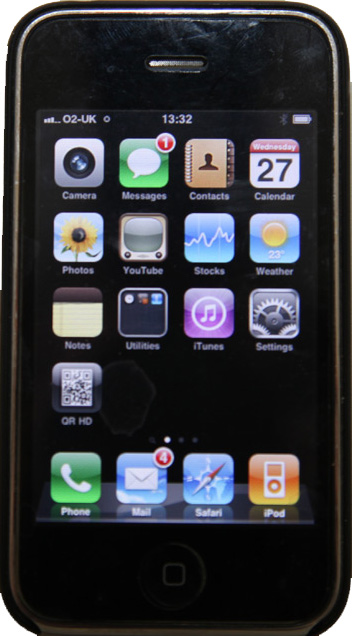7. Touch Screen
A touch screen is the only device which works as both an input and an output device. You view the options available to you on the screen (output) and you then use your finger to touch the option that you have chosen (input).

Touch screens work particularly well with a menu driven interface. For example, a cashpoint (ATM) at a bank would first of all ask which service you want. You touch the option 'withdraw cash' on the screen. You are then presented with another choice, 'how much cash do you want to withdraw?'. Once you have chosen how much, you then get other options such as 'do you want a receipt?'.
Another major use of touch screens are on smart phones and modern tablet computers. Each 'app' is accessed by an icon on the touch screen.
Touch screens are easy to use and are often found in public places such as cashpoints at banks, ticket collection terminals at theatres or airports, information centres at museums.
Touch screens are not commonly used to input large amounts of data because they are not very accurate and they would be tiring on the hands to use for long periods of time.
Advantages
- Easy to use - intuitive, don't need much training
- No extra peripherals such as a mouse are needed
- Software can alter the screen while it is being used, making it more flexible than a concept keyboard which has a permanent overlay.
Disadvantages
- Not suitable for inputting large amounts of data
- Not very accurate - selecting detailed objects can be difficult with fingers
- Tiring to use for long periods
- More expensive than alternatives such as a mouse
- Not robust - can soon become faulty if misused.
challenge see if you can find out one extra fact on this topic that we haven't already told you
Click on this link: Touch Screen
